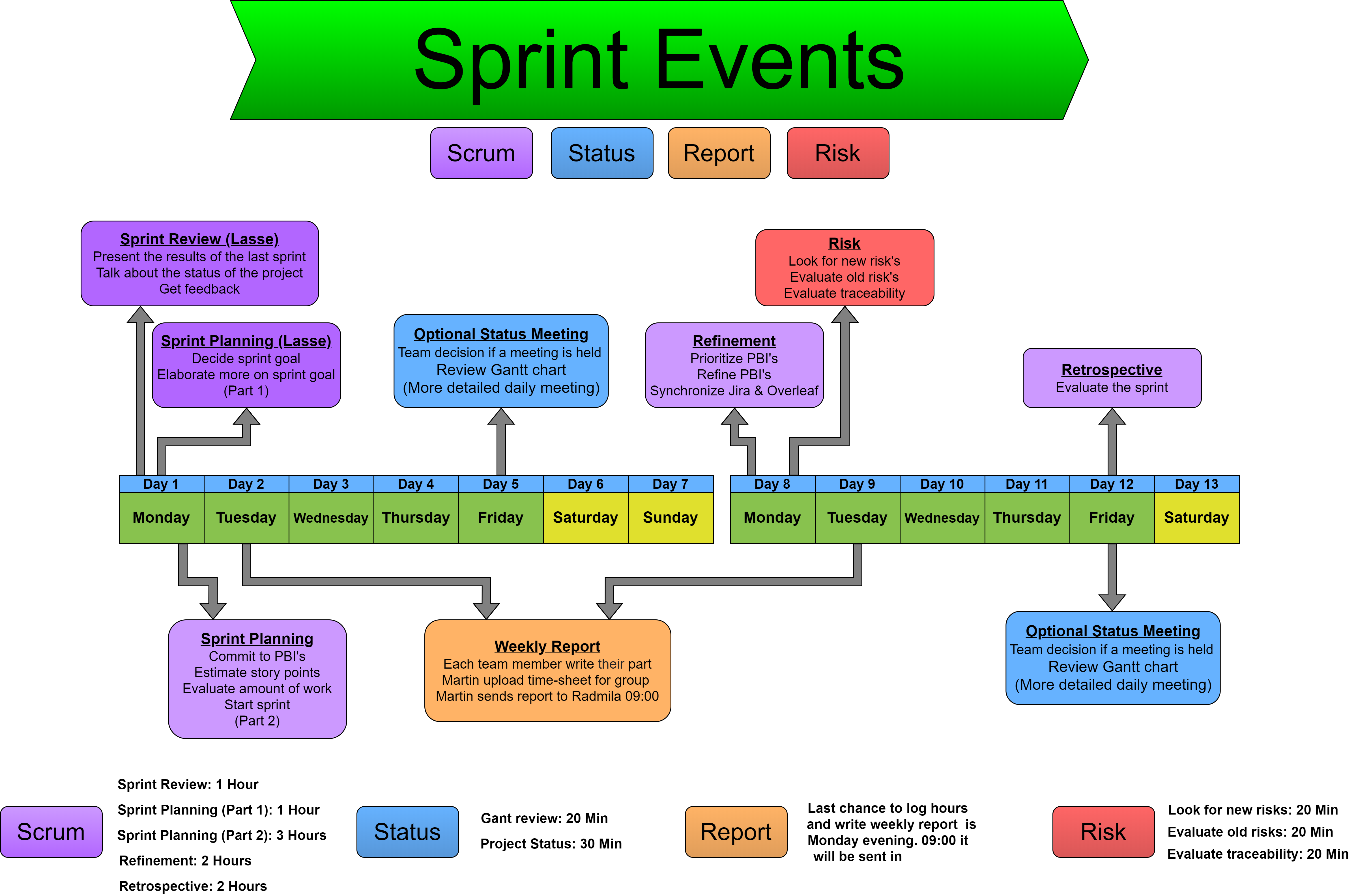
2. refers to the current paradigm of remote firing systems; a transmitter is used to control the receiver, but the extent of its functionality is that of arming the receiver, initiating an energy transferal, or setting a timer. In the 21st century, we believe we can do better.
We organised ourselves by adhering to the Scrum project model; by running two week sprints we were able to iterate often on the various parts of the project. Requirements, risks, development, testing, and evaluation were addressed frequently to ensure we were developing the right solution. Due to the covid-19 situation, we had to get creative and frequently utilize tools such as Google Hangouts, Slack, and online drawing & diagramming tools. The figure below illustrates how we used Scrum to guide our daily, weekly, and Sprint workflow.

To address, 1. we had to select electrical components that were smaller than the ones used in today's remote firing systems, and subsequently construct a smaller PCB. However, this had to be done without sacrificing any of the existing functionality; in fact, for our solution, more functionality had to be added. With a smaller PCB, a smaller casing could be constructed, but this too couldn't afford to sacrifice any of the ergonomics and physical traits of existing remote firing systems -- this meant the casing had to adhere to ingress protection standards, be resistant to a large and varied selection of weather conditions, and be durable enough to not break upon hard impacts, among a myriad of other concerns.
To address 2. we had to develop a user-friendly software solution that could easily be used by the operator of our system, and also facilitate the means by which it could be integrated with existing military systems. The primary purpose of this software solution was to aid the operator in their decision making and tactical awareness, ensuring that when they for example, either arm, initiate energy transferal, or set a timer, that they could make these choices confidentely and with no fear of mistakes.